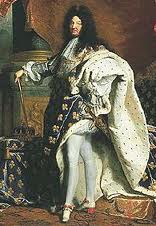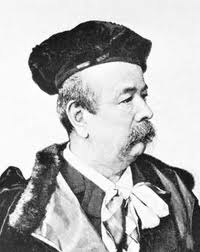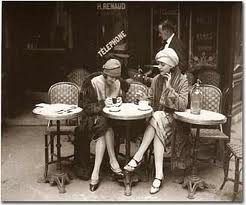The French were the first to make an industry out of fashion, not just dress-making, and they have been exporting their style since the 17th century which is frankly before most of the world had even realized what fashion was.
Today, along with London, New York and Milan, Paris is considered one of the fashion capitals of the world.
These days that doesn't just mean that the people in Paris wear pretty clothes - it is a serious business.
Fashion has always existed at the crossroads of art and consumerism and never more so than in today's society. The way we perceive our desires, bodies, and eras shapes fashion every season, as it shapes us. Paris fashion is at the center of it all.
It all kicked off in the 17th century when the association of France with fashion and style was initiated by, surprise surprise, Louis XIV's court.

The Sun King made it his business to be at the center of all that was beautiful in the world so the luxury goods industry in France became a royal commodity. The creation of the fashion press in the 1670s catapulted French fashion into the spotlight and the notions of different fashion "seasons" and the changing of styles became available to a bigger audience.
Louis XIV himself was responsible for starting the trend for outrageous wigs of curled hair. The king was going bald so he over-compensated and the rest of the court followed suit.
The French Royal court turned into a farcical game of one-upmanship where fashion was concerned - Whose wig is the tallest? Whose skirt is the widest and most covered in tiny bows? In Paris fashion big was the rage.
The rebels were of course very quick to change all this and went very fast towards the opposite direction -- what before had been of a baroque, almost decadent, excess, now everything was simple -- as per the ideas of the era and also because hygiene had improved wonders by now and people had to buy more fabric to have at least one piece of clothing to wear while they cleaned the other one.
And then the 1800s came and department stores were opened, giving a boost to Paris fashion.

Instead of courtiers, France now had the bourgeoisie and, as the driving force that made the economy move from hand to hand (as in, they could actually move money around), French fashion found its way into society.
It wasn't long until the couturier (designer) was born. It is, of course, as usually with designers, a controversial statement, but a man from England called Charles Frederick Worth is more or less accepted into the popular vernacular as the man who totally dominated the industry.
He was the first to be considered a designer and not just a dressmaker - he invented the fashion show and the fashion label as a status symbol.
He went on to become so successful and respected, in fact, that he earned the final say on whatever their customers were going to wear, regardless of their opinion. He also came up with the idea of actually sketching the design before producing an expensive sample garment. He was hailed as a genius for that. Ah, the world of fashion.
In the late 19th and early 20th century, the French fashion industry exploded (Vogue was founded in 1892) and Jacques Doucet and Madeline Vionnet founded fashion houses.
They were influenced by Art Nouveau and Orientalist trends and so finally women were “liberated” from corsets and heavy petticoats and instead wore their whimsical designs with flowing bias-cut dresses.
In 1925 a little known designer called Coco Chanel first came into prominence and revolutionized Paris fashion and then the world's.

In 1947 the world's attention was on Paris once more as Christian Dior unveiled his "New Look" - the clinched in waists contrasted with majestic busts and full skirts delighted the post-war clientele in its femininity.
Hubert de Givenchy and Pierre Balmain both opened fashion houses soon after and Paris was the center of the world again.
The 1960s saw the Parisian youth becoming disillusioned with French fashion, (apparently too elegant and elaborate) favoring instead the casual style seen in London.
In 1966, Yves Saint Laurent put Paris on the spot again with his a prêt-à-porter ("ready to wear") line which made fashion accessible to the masses.
In fact, even though Paco Rabanne and Pierre Cardin pushed fashion towards the future, creating bold shapes they always had to stay under YSL's shadow. He was undoubtedly king of the latter part of the century.
He pioneered the tuxedo suit for women, seducing everyone with his androgynous style and Left Bank beatnik chic.
Since the 1960s Paris fashion's claim to the crown has come under increasing competition from London, New York, Milan and Tokyo.
Nevertheless foreign designers like Karl Lagerfield at Chanel and Marc Jacobs at Louis Vuitton still settle in France. Parisian fashion is celebrated bi-anually during Paris Fashion week when the crème de la crème of the fashion world flock to the city to see what they will be wearing next season.